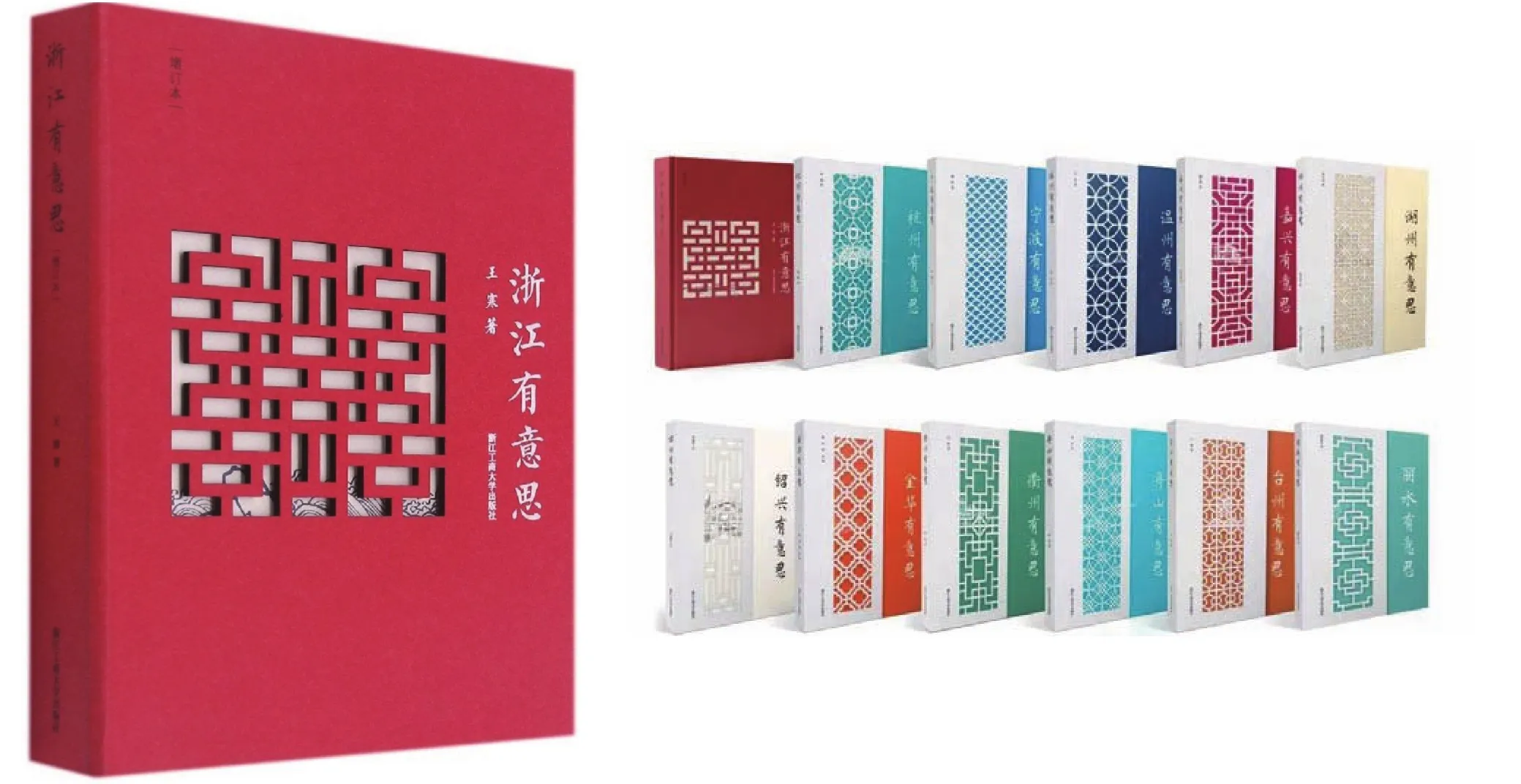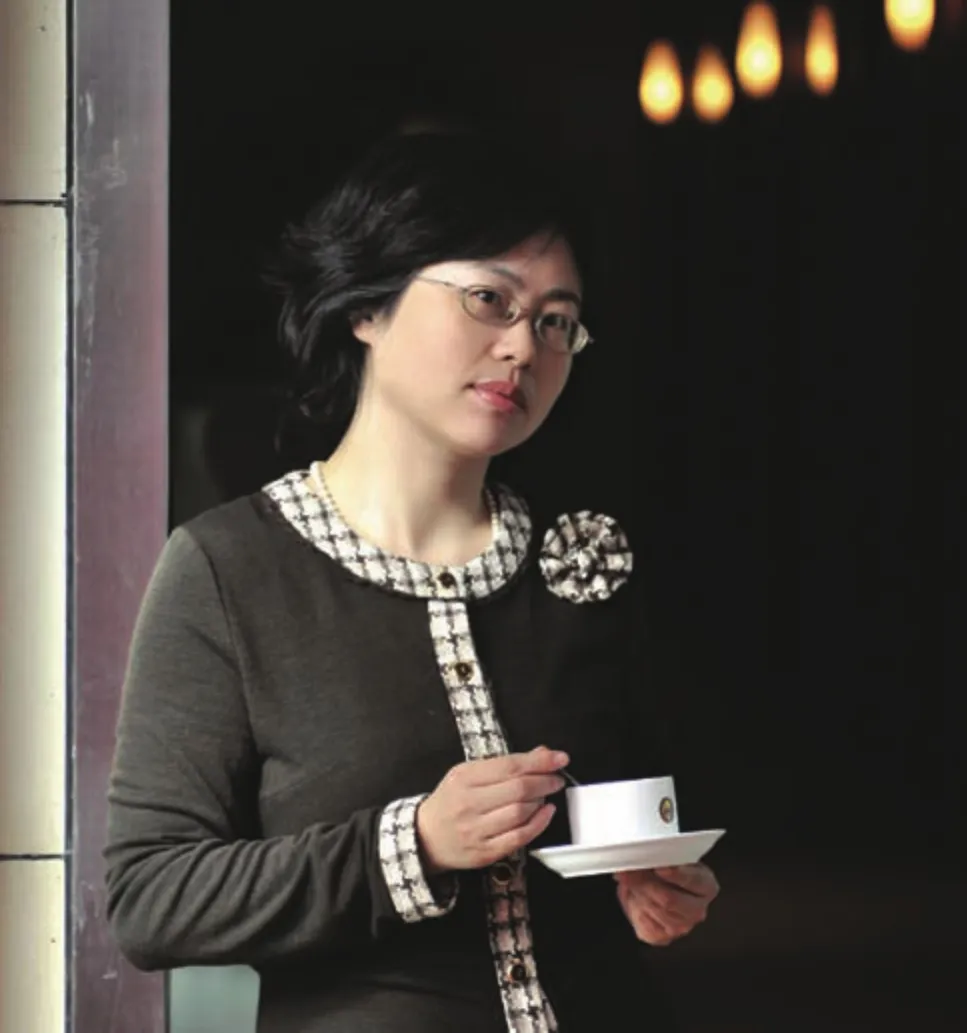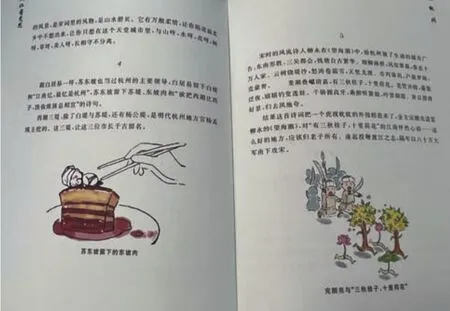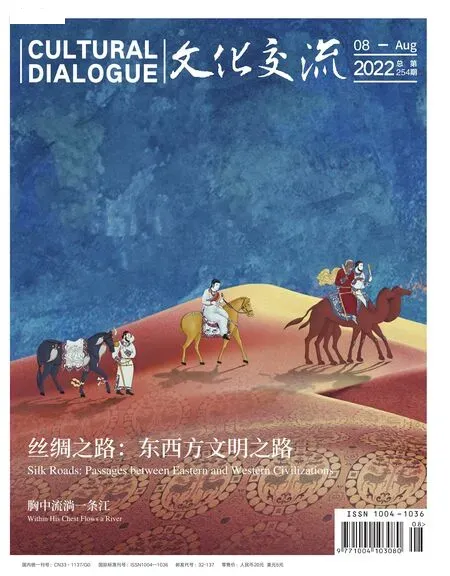王寒:江南清丽地 还数《浙江有意思》
文 /陆 遥

《浙江有意思》系列丛书目前已有12本。A dozen volumes have been published for the “Zhejiang Is Interesting” book series.
王寒走过世界四十多个国家,最远到达南极;走过中国31个省区市和港澳台地区,她说:“最爱是浙江。”
“江南不仅是地理名词,它还是一种意象,每个人的心中都有一个江南。”在王寒看来,江南是“三秋桂子,十里荷花”,是“杏花春雨江南”,有山水之美、风物之盛,又有人文之厚。
王寒生于杭州,童年在杭州,少年时到台州,现居杭州,走遍浙江,广交好友,写起江南也是得心应手。“江南是多元的,又是相通的,家乡的风物让人爱不够。”
比如浙江人对桂花和荷花的喜好。有一次杭州媒体说杭州人最喜欢桂花,她不服,翻了翻资料,台州光是叫陈桂花的就有700多位。又说荷花,杭州人每年要吃掉200万只莲蓬,旧时台州人以东湖的新鲜荷叶盛酒,称“碧筒饮”,湖州、嘉兴也有放眼满塘的荷花,变成蜜汁莲藕更添回忆……
浙江有意思
王寒以书写江南风物见长。散文集《无鲜勿落饭》上榜年度中国好书,加印过七次,并在台湾地区出版了繁体字版本,《江南草木记》等五部作品被评为年度浙版好书。《大地的耳语—江南二十四节气》被国家教育部列入向全国中小学图书馆(室)推荐的优秀书籍,《江南小吃记》列入国家新闻出版署的“农家书屋”重点出版物推荐目录……从她的作品中,总能感受到诗画江南的清丽和烟火故乡的美好。
去年底最新出版的《浙江有意思》增订本,清楚描绘着她跑遍浙江全省,用心积累的点点滴滴。
一方水土养一方人。《浙江有意思》是作者王寒多年来生活所感杂记,是关于浙江的城市人文读本,也是浙江的地标出版物, 1200多个段子,生动鲜活,幽默风趣,展现了浙江的山川之美,风物之盛,人文之厚。40个国家的青年汉学家到浙江学习期间,赠送的文化礼品书中,就有《浙江有意思》。
一座城带给人的惊鸿一瞥,不仅仅在于地域风情的流光溢彩,还在于它的地理、它的市井、它的脉相、它的或粗俗或风雅的事儿等杂糅成的浓郁民生文化。
她写杭州的风雅—生活在杭州的花鸟草虫,待遇都很高,报道规格也很高。西湖边的一只水鸟、夏日里的第一朵荷花,都可以占据当地主流媒体的头版头条。她写宁波的口味—爱吃甜的人心善,难怪宁波出了那么多的慈善家。她写温州的方言—会说温州话,自然懂音韵的奥妙,做学问也比别人有优势。
还有白娘子、鲁迅、苏东坡、徐志摩;东坡肉、汤圆、火腿、鸭头;西湖、易筯经、天一阁、咸亨酒店;青瓷、宝剑、女儿红、十里红妆;互联网、剁手党、炒房热……与浙江有关的林林总总,无论是地理、节气、市井、脉相、经济、习俗、还是民风与民情、或粗俗或风雅的事儿,还有人情世故、家长里短、城市性格,等等,在这里都能找到。

王寒。Wang Han.
《浙江有意思》一经推出,广受好评,王寒又策划出版了“浙江有意思”系列丛书12部,“用人民群众感兴趣的方式写浙江”,集浙江11城本土实力作家之力,以“段子体”这一多媒体时代语境下跨文体写作形式,以幽默和接地气的语言风格,生动鲜活地展示浙江各地的风土人情、城市特质、人文性格等,是全面宣传浙江文化的通俗读本,是浙江省地标读物和“窗口”读物。
一个个简短的段子,少则几十字,多则几百字,杂花生树,有血有肉,充满烟火气,幽默宛如与老友聊天。每册配几十幅原创水彩插图,以来自生活的平实素材唤起读者共鸣,让读者能见微知著,了解浙江的过去和现在以及浙江人民的精神风貌。
诗路有意思
如果有远方的朋友来浙江,最想带他去哪里?
看过一座座山,走过一座座城,王寒想把浙东唐诗之路推介给大家。
她曾经在随笔《杖藜行歌天台山》中这样赞美这条路—
如果说秦朝是个粗陋暴戾的莽汉,汉代是年少轻狂的少年,宋元是婉约多情的少妇,明清是红颜消褪的徐娘,那么唐代就是儒雅俊美、雄才大略的俊杰。这个大开放的豪迈时代,带来了诗歌的空前繁荣,也在当时远离长安、甚至被称为蛮夷之地的江南,劈出了一条彩虹般绚丽灿烂的浙东唐诗之路—从钱塘江出发,经萧山到绍兴,沿浙东运河到曹娥江,然后南折入剡溪,经新昌天姥山,最后至天台山而终。
天台山,是历代诗人文化苦旅中不愿错过的一段美景。一直到今天,行走在天台的山水间,她总会被这些风雅的地名打动:白鹤、藤桥、枫树殿、琅珂、花墙、花市、华顶、南山、天柱、乌岭、紫凝、丽泽、欢岙、唐宋、龙溪、雷溪、栖霞、螺溪、雪上、青梅、紫岩……这些地名,如诗,如画,如歌。
杖藜行歌的诗人,把最美的辞藻赠给天台山,使得这座天下名山,既有风花雪月的明艳色调,又有佛宗道源的空灵脱俗。李白脚著谢公屐,持杖行走在天台道,写下“龙楼凤阙不肯往,飞腾直欲天台去”,唐诗人陆龟蒙杖藜行歌到天台山,“松间石上定僧寒,半夜楢溪水声急”。
……
在这篇文章的结尾,她有感而发:人生在世,不如意事十之八九,能与人言无二三,活得开心并不易,不如踏遍青山,放眼天地,寄情山水,杖藜行歌,诗酒自乐。而千百年后的我们,亦能从唐代诗人持杖驭风、衣袂飘然的身影中,感受到他们的欢乐与旷达。
浙江人有意思
从王寒家采访出来,我重了十来斤—她送了我一包作品集。
没有错,量词是包。
王寒是我们的前辈,曾有17年媒体从业经历,已出版著作《浙江有意思》《江南草木记》《无鲜勿落饭》《大地的耳语—江南二十四节气》《江南小吃记》等作品17部,多部散文集入选中国好书榜和浙版好书榜。
观察了一下王寒所著十余本书的扉页,介绍自己的文字很简洁统一—特立独行的摩羯座女子,出生于西湖边,成长于东海畔。
在朋友的眼中,她是走遍万水千山的行者,是构图简洁有意境的拍客,是到处描画人文地图的文化使者,是爱书如命的藏家,更是热爱园艺的能工巧匠。
这一点我感触颇深,王寒带我看她家的各种植物—莲蓬风干做成干花,枯枝绑上花苞搭出小景,客厅、卧室、阳台的上百盆各种绿植,都得到了悉心的呵护。还有她精心布置的家居—书房里做了榻榻米,不想写字的时候也可以稍稍“躺平”。
她自己也这样写:我有闲章两方,一方是“盈室书香”,一方是“满堂花醉”。在她的文字、她的生活中,处处可以看到“我不负时光,时光亦不负我”的美好。
木心先生曾说过江南分为有骨的江南和无骨的江南。在王寒看来,无骨的江南,以杭嘉湖的婉约为代表;有骨的江南,则描绘出绍兴、台州等城市的豪迈与硬气。“你看绍兴,徐锡麟、蔡元培、秋瑾……在每一次民族危难时,都有顶天立地的英雄出现;你再看台州,是股份制经济的发祥地,民营经济占比达到99.5%。”
讲起台州这个自己工作了近30年的城市,她热情洋溢。“有白银市场、钢铁市场、木材市场之类的‘无中生有’,有长屿洞天这样利用废弃采石场打造4A级景区的‘点石成金’,还有旧金属再利用、发展循环经济的‘变废为宝’。处处都是创造力和活力。”
“放眼浙江亦如此。”王寒认为,用三个词可以概括浙江人的特点:勤劳、实干、懂生活。近年来,浙江无论在经济成长还是在社会发展等方面,都充满着创新活力,足以写成煌煌巨著。而今,蓝图已经绘就,期待浙江的明天,会给她更多“有意思”的素材。
Zhejiang Is Most Interesting Throughout Jiangnan
By Lu Yao
Wang Han has traveled to more than 40 countries in the world, reaching as far as Antarctica; in China she has traveled to over 30 provinces and cities, including Hong Kong SAR, Macao SAR and Taiwan province. “My favorite place is Zhejiang,” said Wang. “is not only a geographical term, but also an image in everyone’s heart.” In Wang’s view,, or the south of the Yangtze River, is about “autumn permeated with osmanthus scent; growth of lotus stretching for ten miles”, and “apricot blossom and spring rain” — it has beautiful natural landscape, and also profound humanistic culture.
Wang Han was born and raised in Hangzhou. Later in her teenager years, she moved to Taizhou, and is now living in Hangzhou again. Having widely traveled in Zhejiang, she has made a lot of friends, which gives her great ease in writing about. “is diverse and interconnected, and people just can’t get enough of the things in their hometown.”

《浙江有意思》中的插图也非常俏皮。The illustrations in Zhejiang Is Interesting are also quite interesting.
Wang is an expert in writing aboutsceneries. For example, her collection of essays titledwas listed as “Book of the Year” in China, and has been reprinted seven times with a traditional Chinese edition published in Taiwan province. From her works, one can always feel the beauty of the poeticand the lovely hustle and bustle of her hometown.
At the end of 2021, the latest updated version ofwas published, which clearly and carefully depicts Wang’s traveling through the whole province.
Each piece of land has its own way of raising its people.is a miscellany of what the author has experienced over the years, a humanistic reader about different cities in Zhejiang. With more than 1,200 paragraphs, Wang adopts a vivid and humorous tone in showing the beauty of Zhejiang’s natural and cultural landscapes.
She writes about Hangzhou’s elegance — the flowers, birds and plants that live in Hangzhou are treated very well and reported with great emphasis; a water bird by the West Lake and the first lotus flower in summer can make the headline of local mainstream media. She writes about the flavor preference of Ningbo people —people who have a sweet tooth always have a good heart, and no wonder Ningbo has cultivated so many philanthropists. She writes about Wenzhou dialects — if one could speak a Wenzhou dialect,one will naturally understand the subtleties of phonetics, and has an advantage over others in doing research.
There are also the White Lady, Lu Xun, Su Dongpo, Xu Zhimo; Dongpo pork, dumplings, ham, duck head; West Lake,, Tianyi Pavilion, Xianheng Hotel;celadon, sword, Nü’er Hong, Ten-mile Red Dowry ... Everything about Zhejiang can be found here.
Oncewas released, it has been widely acclaimed. After that, Wang planned and published a “Zhejiang Is Interesting” series of 12 books, “writing about Zhejiang in a way that makes people interested”. By gathering the strength of local writers in 11 cities in Zhejiang, she uses short paragraphs, a form of cross-genre writing in the multi-media era, which are packed with down-to-earth humor and vividly present the local customs,characteristics of different cities and their people in Zhejiang,etc. It comprehensively promotes Zhejiang’s culture as a cultural landmark and a window through which to see the whole of China.
If a friend from far away comes to Zhejiang, where would you most likely to take him/her? As a well-travelled person, Wang recommends the Tang Poetry Road in East Zhejiang. She once praised this road in her essay:
She concludes the essay emotionally: things rarely turn out as good as they should be, as a man rarely finds the right words to share with his counterparts; it is not easy to live a happy life.Therefore, let us walk across mountains and rivers, find our peace of mind in the wide world, and seize the day to amuse ourselves.Thousands of years later, we can also feel the joy and openmindedness of the poets of the Tang dynasty through their free and unrestrained figures.
When I came out from Wang Han’s house after the interview,I weighed about five kilograms heavier — she gave me a packet of her works. That’s right, a PACKET.
As our predecessor, Wang has 17 years of experience in the media industry and has published 17 books including, a number of which have been selected in the good book list both nationally and provincially.
After observing the title page of more than ten books of hers, I find her pro file unanimously simple — “An independent Capricorn woman of her own, who was born by the West Lake and grew up by the East Sea.”
In the eyes of her friends, she is a traveler who has covered thousands of mountains, a photographer who uses a simple and meaningful composition, a cultural ambassador who draws humanistic maps widely, a collector who is addicted to books, and a skilled craftsman who also loves gardening.
Mr. Mu Xin (1927-2011) once said thatis divided into “thewith bones” and “thewithout bones”.In Wang’s opinion, “thewithout bones” is represented by the ebullient Hangzhou, Jiaxing and Huzhou; while “thewith bones” depicts the bold, tough Shaoxing, Taizhou and others.
According to Wang, the characteristics of Zhejiang people could be summed up in three words: hardworking, practical and lively. In recent years, Zhejiang is full of innovation and vitality in both economic and social development, which provides ample materials for a brilliant masterpiece. Now that the blueprint has been drawn, we expect that Zhejiang’s tomorrow will be filled with more “interesting” elements for Wang to write about.

